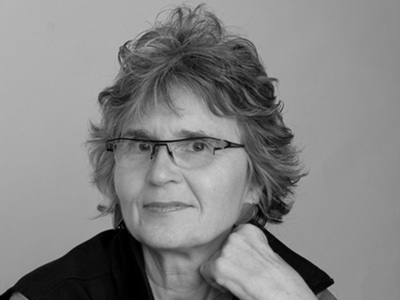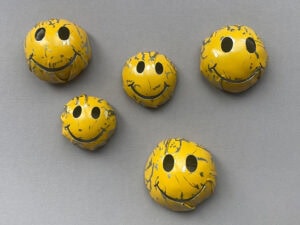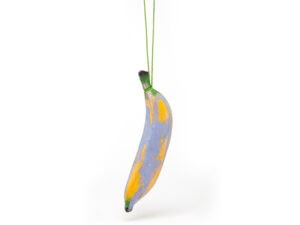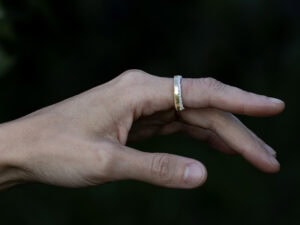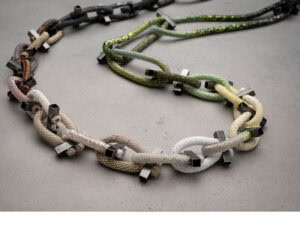How does a piece of jewelry graduate from your personal wardrobe to an institutional collection? I have embarked on this journey several times in the past, but the rules have changed and the museum acquisition process is more formal now. Recently, I began the process again with three pieces of art jewelry, each acquired in a different way, but all destined for the same place: Tacoma Art Museum (TAM) in Tacoma, Washington. What follows are notes on my personal experience, some words of advice and step-by-step instructions to assist the process.

Step One: Get the Curator and the Museum On Board
The most important preparation for all three gifts was to have Rock Hushka, the curator at TAM who oversees the jewelry collection, view the pieces – or a good image of them. After he saw them, he gave me the verbal green light to initiate the donation process. So, step one in this process is to ensure the museum wants your gift. When I asked Rock for his advice for this article, he emphasized how important it is to build long-term relationships with a museum. Learn their collecting priorities to better understand how and why a museum is building its collection. ‘Museums can’t take everything,’ he said ‘and not every work is appropriate for a museum collection. The three works you are donating will help us build our long-term goals for building the collection.’

Step Two: Find a Professional Appraiser
Step two is to have the object professionally appraised. This is where good record-keeping and even a little sleuthing can pay off. An appraiser needs as much information on the piece as possible to determine the value. What kind of information? Purchase receipts, books or articles where the work has been published, original artist notes or sketches about the work, correspondence or stories referencing the work, exhibition history, any previous owners and so on. Of the three, the Eleanor Moty brooch was easiest as she sent me the exhibition history when I bought the brooch. Eleanor has regular shows at Perimeter Gallery in Chicago, so a recent price of a comparable piece was also available. The buckle by the late Heikki Seppä was harder. However his widow very thoughtfully included a copy of a magazine with a photograph of the buckle when she donated it to the auction, along with some biographical information about him and his career, which helped a great deal. I also called her to find out more about the buckle. She found an entry in one of Heikki’s notebooks stating exactly when it was made (1975) and what materials he used.
Unfortunately, the Bill Ford ring presented a real challenge. William Charles Parkhurst Ford died in 1984 and his estate was scattered. I knew my mother purchased the ring in 1970, but that was all. Luckily a friend of mine contacted someone she knew at the Yakima Valley Historical Museum and I got some basic information about Ford that way. They also found a name in the Yakima phone book of a possible relative and I sent a polite inquiry to that address. It was returned. Next, I found a phone number on the internet and fearlessly called it. The person who answered was a relative of Ford’s and was happy his work was going to a museum, but was unable to give me any further information. My search dead-ended there, but I felt I had done as thorough a job as I could and was ready for a professional to take over. It was fortunate that the ring had Ford’s hallmark on it, not only to identify it as his work, but also to show that it was made sometime within the years he was actively working.
Finally, I photographed all the pieces, assembled the information on the three prospective donations and employed Karen Lorene at Facèré Jewelry Art Gallery in Seattle to prepare the appraisals. Karen is a member of the National Association of Jewelry Appraisers and the International Society of Appraisers. She is accredited to appraise jewelry for tax deduction. Karen charges between US$75 and US$100 per item, depending on the amount of research required. Because of the records I had assembled, she was able to complete the appraisals quite speedily and the cost was US$75 for each appraisal.
I can’t emphasize this enough: an accredited appraiser is your best bet for an uncontested IRS tax deduction. In the United States, a collector can claim the appraised value of a work of art in the year it was donated and deduct a percentage of that value from their federal income taxes. The value of your donation can often bring a pleasant surprise if time has passed since your original purchase. For those who live outside Seattle, there are many independent certified appraisers, but make sure your appraiser has experience with appraisals for tax deduction. Requirements for tax purposes are more stringent than the requirements of an insurance appraisal. (It is worth noting that the rules are different if an artist wants to donate one of their own pieces. Artists are only allowed to claim the costs incurred to create the work.)
Step Three: The Wonders of a Good Clean

So what can people who are not jewelers do? Take it to a professional jeweler you trust, with a photograph if possible. Contact the artist, if living, and ask about paying him or her to clean it. If the artist can’t, ask for a good photograph as a guide. If the piece has been worn, at least clean it with a damp cloth. If it is made of silver, gold, copper, brass or bronze, use a jeweler’s rouge cloth to remove dirt. The tricky part is in knowing what is dirt and what is an intentional patina. I recommend the Sunshine spray and cloths, available online from Rio Grande. Never use anything abrasive and don’t try to remove scratches or make repairs on your own.
I think it is important to submit the piece to the museum clean, because many institutions have a policy not to alter the work in any way once it becomes the property of the museum. Tarnish on silver indicates that an oxidation process has begun that can actually harm the metal over time and of course it just plain looks bad. There are two schools of thought about repairs: one says leave it damaged and the other advocates for the maker or a professional to undertake repairs. Personally, I like to supervise repairs of my own work and I always ask another artist first if they want to make the repairs on any work of theirs that I own. At the very least, I want their permission to do it myself.
Step Four: Deliver It Yourself
When the appraisal is finished, make an appointment to deliver the work and associated research and paperwork to the museum for the acquisitions committee to consider. They will want to see the actual piece, not a photograph of it. Hand-delivering is always better than shipping.
Have I ever had a gift declined? Yes, and I ended up giving the art away to family members, another private collection, or selling it at auction. Don’t be insulted just because what you offered isn’t what that museum collects. (See step one.)
In Summary
Collect as much information about the work as possible when you acquire it, especially a good photograph taken shortly after it was made. Keep receipts, publication credits, exhibition credits, sketches, correspondence with the artist and so on.
Have the work cleaned or repaired if necessary, but leave the scratches created by wearing.
Build relationships with museums that collect jewelry and make sure the museum you want to make the gift to wants the work. Find out when the acquisition committee meets if you want to claim the gift in a specific tax year.
Get a professional appraisal to submit with the work to the museum.
Finally, I want to add that some museums have lists of work they are actively seeking. Not long after AJF visited the Samuel Dorsky Museum of Art at SUNY New Paltz in 2005, a Northwest collector contacted me about what to do with two Ken Cory brooches from the 1970s. She didn’t want to sell them and TAM already had a lot of Ken’s work, so they weren’t interested. I put her in touch with the curator at the Dorsky because they had mentioned Ken on their wish list. The curator was thrilled to accept the brooches and it was a win-win for everybody. It’s important to remember that we collectors can be more than just hunters and gatherers. Collectively, we can also be an informal network of information about artists, their work and where the work can be found.
